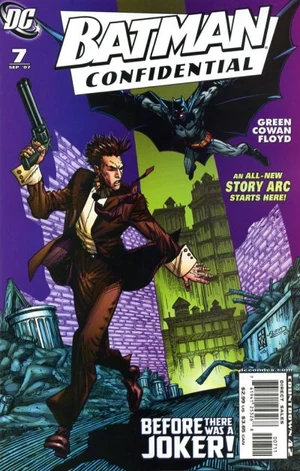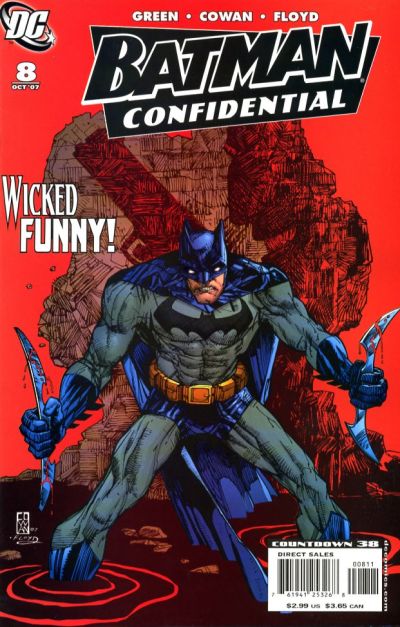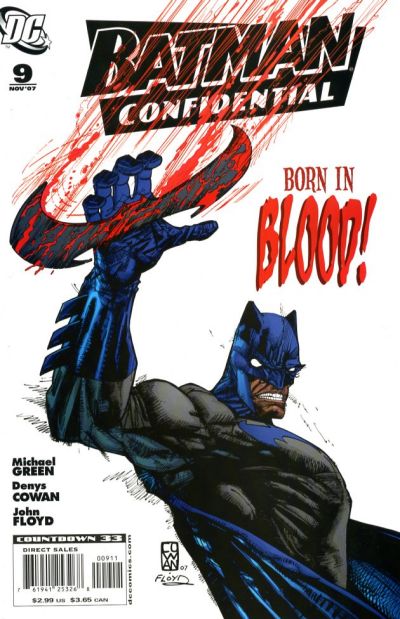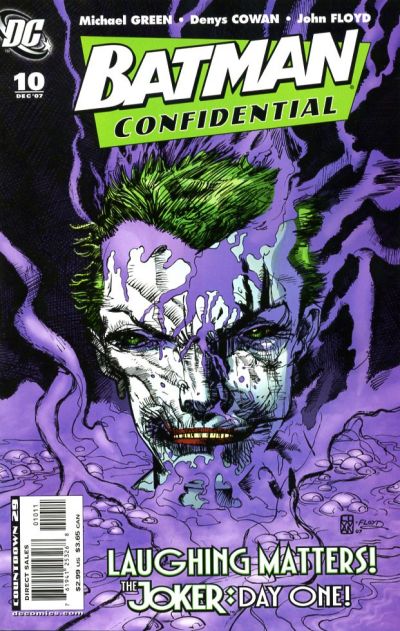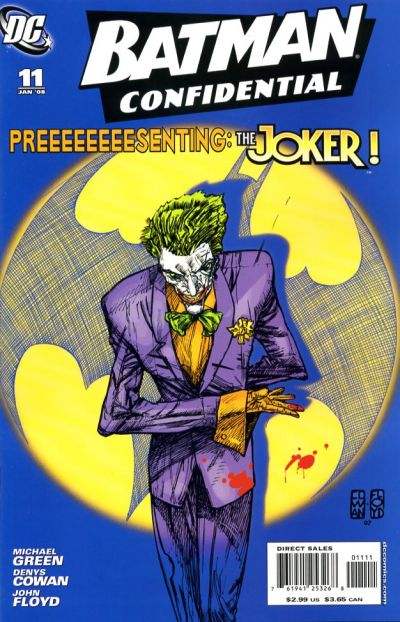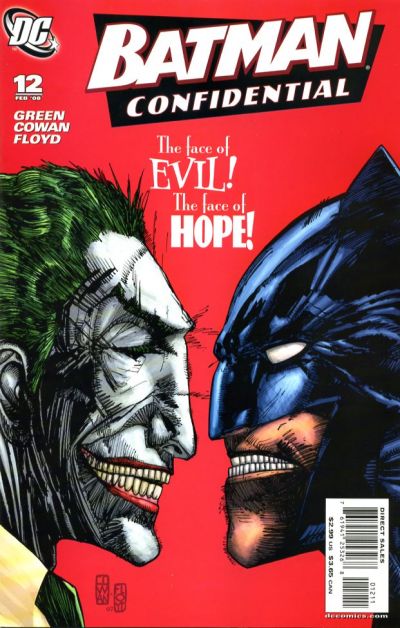Superman is dead...in the comics...again...I should elaborate.
Prior to "Rebirth", DC published "The Final Days of Superman", a two month crossover event involving all the Superman books where after certain events across the Superman and Justice League books, Superman's body was failing him and this would not be a time the Man of Steel could cheat death. In my opinion, this story started out well in the first half with Superman getting his affairs in order (even if it was kind of ripping off "All Star Superman"), but really got sidetracked with this one guy who through a convoluted way got Superman's powers and believed he was actually Superman and Clark Kent. Aside from that, the story does end with Superman's death as he says his last words to his friends: Batman, Wonder Woman, Steel, Lana Lang, and Lois Lane. I was somewhat disappointed though that there was hardly interaction between him and the pre-Flashpoint Superman. Anyway, I thought it would be nice to take a look back at how this version of the character began.
Back when the New 52 kicked off in 2011, there were two Superman solo books, the main Superman title showing his present adventures, while Action Comics, written by Grant Morrison, would (initially) show the character's new beginnings. Prior to the New 52, I had barely followed Superman, but as he was getting his origin retold (for the third time within 10 years), I saw Action Comics as a good point to jump on.
So let's dive into "Superman and the Men of Steel."
I should note a few things though. While this arc is considered to run through Action Comics #1-8, #5-6 were an interlude story so I'll be skipping those issues. And while some of these issues include a back-up story, I usually skip those anyway, so those won't be part of this either
Issue one starts with Superman putting the fear of God into a corrupt businessman named Glen Glenmorgan (I guess the parents weren't real imaginative when picking names) in his penthouse after easily going through his bodyguards, as the police arrive and order Superman to put Glenmorgan down, saying he will as soon as he confesses to his crimes. Superman then leaps from the balcony to the streets below, landing safely and still holding Glenmorgan, who promptly confesses in front of the police to using illegal cheap labor and bribed city officials. Superman then speeds off away from the police, as they shoot at him only to have the bullets bounce off him.
What I like about what Morrison does here is that he takes Superman back to his roots. Way back in the original Action Comics #1, Superman used his guise as investigative reporter Clark Kent to expose corruption and get justice no matter what, and became Superman when more needed to be done. It's exactly what we see here. He isn't even shown to fly yet, just like when he first appeared. You'll also notice that he wears a t-shirt with the S-shield, jeans, and the red cape. It makes him look more like a man of the people. It's very easy to cosplay too. Hell, I still have the cape from a Superman costume I had when I was a little kid.
At a military headquarters, General Sam Lane is discussing how to capture Superman with scientific consultant, Lex Luthor. They take control of the city's electrical grid to slow Superman down, first by using a wrecking ball, which hits a building scheduled for demolition but has a group of squatters living in it. Superman saves them, making sure they all get out before the building collapses. Following that, one tank shoots an electrified net at Superman, who shakes it off and uses the wrecking ball to smash it. Another tank fires a round at Superman, who is then shielded by the squatters he saved, giving him time to escape, but not before saying they shouldn't "get in trouble on my account". This goes along with what I said about Superman being a man of the people, with those he save returning the favor in protecting him.
Later on, Luthor orchestrates a train, which has Lois Lane and Jimmy Olsen as passengers, to derail to draw Superman out. Superman does save the people, but the train almost smashes him into the Daily Planet, pinning his unconscious body to the building, making it easy for the military to capture him. A nice touch to end the issue is that Luthor compares Superman to historical instances where an indigenous species is brought to a new environment and causes the extinction of another. "Non-native strains WILL destroy the entire ecologies, given the opportunity", he puts it. It stays in character with Luthor's belief that Superman is a danger to humanity.
As issue two begins, Superman is strapped to a chair and being tortured, forced to breathe in sarin gas and electrocuted, with doses getting stronger and stronger. Luthor oversees the process, wanting to see how much Superman can endure. A nice touch I like is Luthor constantly referring to Superman as an "it", not he, another instance of not considering Superman a true man.
Outside the facility, Lois is trying to get to her father and find out what they've done with Superman. While he doesn't give in, Lois is able to charm her ex-boyfriend Sergeant John Corben, getting close enough to steal his pass key to get in. Eventually Superman is able to break free from his confinement, and on his way to escape, he discovers the rocket he was brought to Earth in, and it even communicates with him in Kryptonian. Considering the situation, Superman promises the ship he'll come back for it as he makes his exit.
An angry Corben decides they need to proceed with the Steel Soldier project, even though it's "six months away from being safe", believing it's the only thing that can stop Superman, and more personal to him, get Lois back. The issue ends with Luthor communicating with Brainiac, who wants "the specimen", referring to Superman.
Issue three is mostly the aftermath of the previous two issues, with Glenmorgan using his influences to smear Superman to the public, and it works. The squatters he saved before now bash him on television, and when Superman saves a little girl and her cat from being hit by a truck, only to be met with fear by the girl and anger from nearby civilians, who throw bottles and bricks at him. This has an effect on Clark, who in one panel is shown to have thrown his "S" shirt in the garbage, and apologizing to a picture of his foster parents, saying "[he] tried." So yeah, it's not just the new movies that show Clark feeling inadequate and unwanted as Superman, and let's keep in mind this book came out two years before "Man of Steel". It's just not as focused in this story as it was in the movies.
Later, Clark, Lois, and Jimmy go to a factory where the rebuilding of the subway train and question the supervisor about it, considering they're going to use more robotics to build and run the train, costing people their jobs. Suddenly, robots begin coming off the assembly line to the surprise of everyone. "Your planet's DATABASE has been copied and filed", they say. "In advance of imminent DESTRUCTION and the extinction of ALL LIFE--TERMINAUTS WILL PRESERVE SIGNIFICANT ARTIFACTS".
Elsewhere, John Corben is getting ready to be the first test subject for the Steel Soldier project, with the "Metal-Zero fusion". Metal-Zero. Metal-0. Metallo. Is that clever? I think it is anyway. As the process begins, Corben is infected by Brainiac, who speaks through him. "I am the VOICE of the COLONY of the COLLECTOR OF WORLDS", he says. Luthor, present at the scene cheerfully greets him and reminds him of their bargain, with Corben/Metallo/Brainiac (or whatever) wanting to know where Superman is as the issue ends.
There's not much to say about issue four because it's really action heavy, with Metallo and the Terminauts attacking the city, stealing "significant artifacts" and fighting against Superman, who gets an assist from John Henry Irons (AKA Steel), a doctor who quit the Steel Soldier program, but had his own suit on hand. It's all for not though, as Brainiac raises the city from the ground, shrinks it down and places it in his collection on his ship. "Planter 205 Survivors" he says. "You have been filed. Bottled. Preserved for all time. In one hour, preservation is complete and irreversible. Welcome to the collection." It's here we get our first look at the New 52's Brainiac.
(Okay, I'm cheating by using a panel from issue 7, but that's the best pic I could find.) It's not a bad resdesign, giving us something different with a bug motif. As it would turn out, it's more of a drone from the real Brainiac that would appear in the future.
Among the citizens captured are Lois, Jimmy, and Luthor. Back on Earth, General Lane asks Superman if there's anything he can do. Superman says he has an idea as the issue ends. Skipping to issue 7, Superman, equipped with an oxygen tank and a ramp set up, gets a running starts and leaps as high as he ever as to get to Brainiac's ship in space, only to be electrified by the ship's tendrils and brought inside. Brainiac's machines try to preserve him, but Superman isn't having it. Superman then happens upon a collection of bottled cities, including Kandor, which Superman remembers from dreams, faint memories from when he was a baby. Kryptonian garb is also on display as one of Brainiac's artifacts. Brainiac explains that he collects cities and artifacts from doomed planets and reveals to Superman that he comes from Krypton. He then wants Superman to choose which city to save between Kandor and Metropolis in a kind of "nature or nurture" experiment. He taunts Superman with the possibility of being with his own people and that "The PINNACLE of human technological achievement was "Metal-Zero", a WEAPON they made to KILL YOU." Superman then smashes open the case containing the Kryptonian suit and puts it on, transforming into his updated suit as he decided to fight for Earth.
A lot of flack the New 52 Superman costume got was that it was armor and that Superman doesn't need armor because he's indestructible. But see, it's not about wearing armor. It's about heritage. He's honoring his people by wearing the armor. I don't know what's hard to get about that.
Brainiac and Metallo then appear to battle him as the issue ends.
As the eighth and final issue of the arc begins, so does the battle, and as it rages on, Corben is able to regain control of himself and attacks Brainiac, asking Superman to save Lois and the city before being taken over again. Superman then realizes that Brainiac values the cities and threatens to destroy them if Brainiac doesn't do what he says. I'm assuming that Superman's plan was to stall Brainiac, because he reached into the Metropolis bottle to grab his rocket, which had also been miniaturized, thrusting it like a bullet in Brainiac's brain (?), and apparently the rocket transforms into a giant crystal, destroying Brainiac and I assume becoming part of the ship's A.I., which allows Superman to take control and place Metropolis back on Earth. I'll be honest, Morrison's writing can get a little crazy and hard to follow sometimes, this being one of those instances. But the basic idea is the day is saved thanks to Superman, who gets the key to the city in the end as he is accepted by the city as a hero (not to mention he is now able to fly).
This is really a basic summation of issue to issue, and I leave out a lot of details, partly because I wasn't sure how to reference them in the scheme of things, and also because there were some details that were a larger part of Morrison's run on the book.
I'll admit that maybe the story isn't as good as I remember, but I believe Morrison succeeds at what he set out to do, and it's something I didn't realize the first time around. It's shows Superman's transformation from hero of the downtrodden to protector of the planet, wanting to take down corrupt officials and ending up fighting an alien overlord, in addition to the escalation of his powers and the people's growing appreciation of him. A nice touch was Clark not knowing his true origins before taking on his role of Superman, which gives way for the choice Brainiac offers him between saving Kandor or Metropolis.
What also really stood out to me was Lex Luthor. He was very steadfast in his animosity towards Superman, believing the alien to be a threat to humanity, and even being hypocritical in working with Brainiac. Hell, Luthor would have rather stayed miniaturized than allow Superman to save him, believing this was the better path toward salvation. Something to note though is that Luthor appears to be a little heavier than he would usually be depicted. I'm not sure if that was the artist's intent, but I could see that Luthor would probably want to get in shape for his future battles with the Man of Steel.
Overall, this story does a good job at reintroducing elements of the Superman mythos in a new timeline. I recommend this to anyone wanting to get into Superman, as I would with other attempts to retell the character's beginnings.
RATING: 8/10
RECOMMENDATION: 10/10


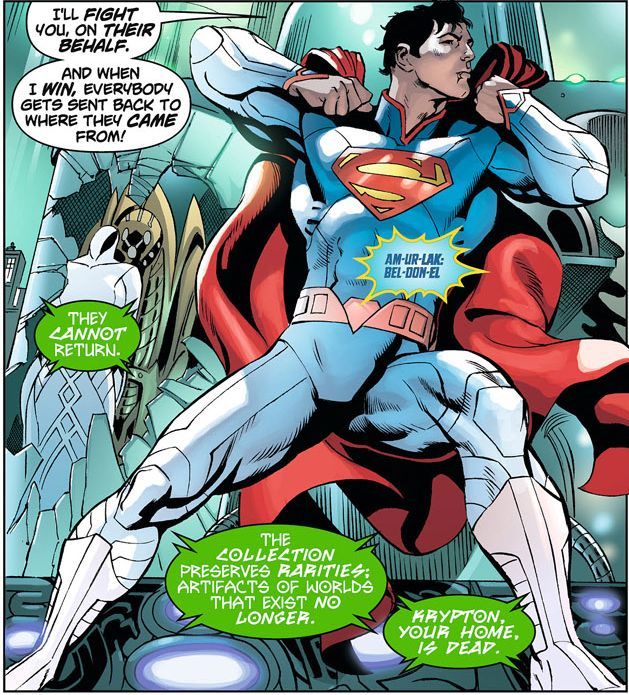






_from_Fear_Itself_Vol_1_7_0001.jpg)



.jpg)

